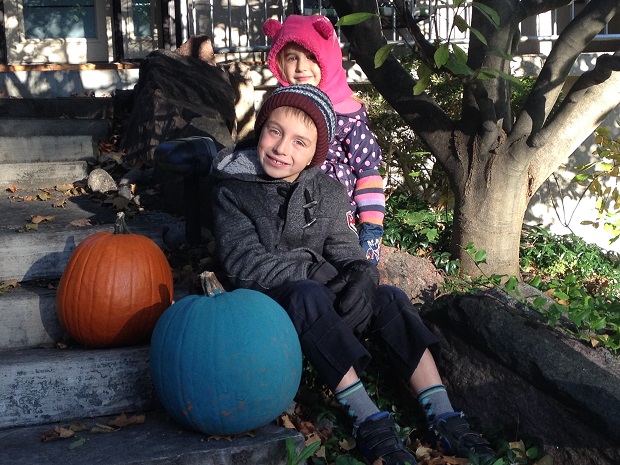William Boguski was eating a Reese’s Pieces when he suffered a severe allergic reaction. He was only two-and-a-half years old.

“He was almost not breathing by the time we got to the hospital, it was very, very scary,” his mother Sherry Boguski told Global News.
Here’s the thing – William had eaten peanut butter for six months and had been just fine, but that all changed with time, an example of how unpredictable food allergies can be and how they can develop.
Halloween can be a time of excitement and stress for kids with allergies and their families. Encouraging children to enjoy the holiday, to not be left out, but it also involves a strict set of rules and a rigorous parental process of checking, sorting and examining all candy.
That’s why when families spot a teal pumpkin outside a home it’s a sign of safety and relief.
“Having the teal pumpkin more than anything shows support,” said Sherry.
The Teal Pumpkin Project encourages families to place a teal-coloured pumpkin outside their house – to show that you offer allergy-friendly treats, or non-candy treats.

“Basically what it means is they are an allergy aware home. They have made a conscious effort to have allergy-friendly treats, or non-candy treats,” Beatrice Povolo from Food Allergy Canada told Global News.“They may be choosing to give out things like stickers, glow bracelets, or different types of small toys for kids, as opposed to just giving out candy.”
The project launched in Tennessee in 2012, now run by the U.S. Food Allergy Research & Education (FARE), through social media Canadians have been embracing it, but this is the first year Food Allergy Canada has officially partnered with FARE to spread awareness about the teal pumpkins and allergies. They hope to have 100,000 household take the pledge this year.
“It’s an inclusive program,” Povolo told Global News, “giving different options for Halloween… not trying to take away from any of the traditional fun of trick or treating programs but just adding one more.”
Close to 300,000 children and adolescents in Canada are living with food allergies – and the numbers continue to increase.
READ MORE: Teal pumpkin project gives kids with allergies more treat, less trick
At his house, William, his sister Stella and their mother have been busy painting pumpkins teal.

William’s family, including his father Michael, the keyboardist for Blue Rodeo, encourage him to enjoy trick-or-treating. There are family rules – William can collect candy, but before he eats anything, the treats are sorted and inspected later at home. They encourage him to remember the rules and look for those teal pumpkins. For Halloween at William’s house they give out stickers, erasers, pencils, temporary tattoos and candy.
For William, now seven, the teal pumpkin project means, “he doesn’t have to feel different” and for Sherry “our children are accepted as well.”
It also means Halloween can be – fun.
“He has a blast. I love Halloween, we just have to be careful,” said Sherry.
- Solar eclipse eye damage: More than 160 cases reported in Ontario, Quebec
- 3 women diagnosed with HIV after ‘vampire facials’ at unlicensed U.S. spa
- ‘Super lice’ are becoming more resistant to chemical shampoos. What to use instead
- Canadian man dies during Texas Ironman event. His widow wants answers as to why

Stella and William and are painting their pumpkin to show their house is allergy-friendly.
According to Food Allergy Canada, close to 2.5 million Canadians have at least one food allergy. The incidence is highest among young children (under 3 years of age) with close to 6-8 per cent affected by food allergies.
Food Allergy Canada has Halloween tips for parents of children with allergies :
- Make sure an adult is with younger children at all times
- Remind children of the no-eating rule while they are out trick-or-treating
- Serve a hearty dinner to lessen the temptation of snacking while out
- Have kids carry their auto-injector with them and wear identification
- Get your kids to wash their hands as soon as they get home
- Check all treats at home
- Have the kids read all ingredient labels, with adult supervision, to check for their allergen
- Remember- no label, no candy!
- Sort the treats into three piles- keep, give away (your work, local food bank, seniors homes) or throw out
Tips for the community at large:
- Ask when kids come to the door: “Does anyone have a food allergy?”
- Be prepared – have food packages/labels nearby, so you can check ingredients if asked
- Think outside the candy box – have non-candy items, such as stickers and pencils, in case your treats are not suitable for kids with certain allergies






Comments